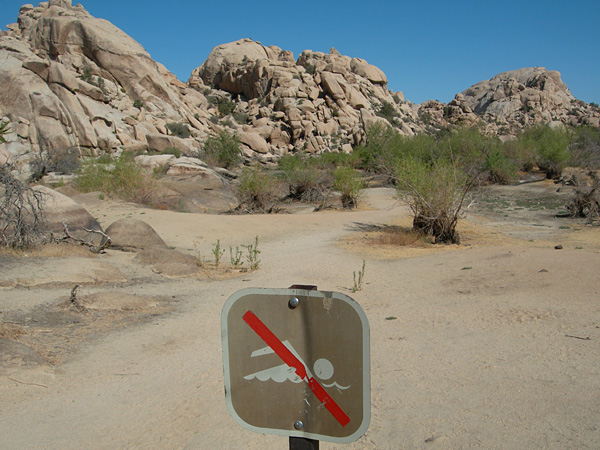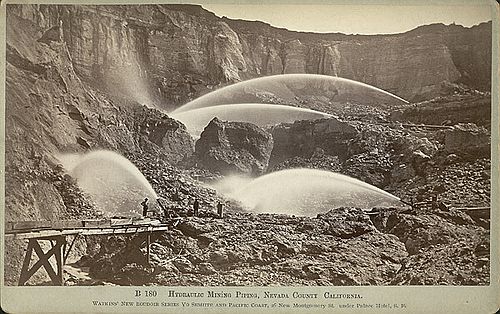New Work—Mojave Desert Artifacts
I just updated my website with new images from my Mojave Desert Artifacts series. I will be going back into the studio for the next few weeks, and will be uploading more as soon as I can.
I just updated my website with new images from my Mojave Desert Artifacts series. I will be going back into the studio for the next few weeks, and will be uploading more as soon as I can.
 Here is new work from my series of "artifacts" collected from an makeshift gun range in the Mojave Desert.
Here is new work from my series of "artifacts" collected from an makeshift gun range in the Mojave Desert.
I made a cross-country drive a few weeks ago, and was able to bring back crates of these collected objects to my studio near Philadelphia. In addition to photographing more of the new and much larger pieces, I will incorporate the actual objects to be shown alongside the large format platinum prints as kind of a mock-anthropological exhibition based on the culture of the desert southwest.
A large-format platinum print will be on view at Project Basho's Onward 2011 show opening today, with an opening reception on Saturday, Feb, 12. I will be there between 2:30 to 4:30, so stop by to have a chat and see some great photography by emerging artists from around the globe.
These new photographs, 16" platinum-palladium prints made in the summer of 2010, are an extension of the aerial photographs I made of an off-highway recreation area in 2009. I am in the process of writing a more complete statement about the larger scope of the project, but for now, I will say that looking at the culture of recreation in the desert from the point of view of a future archaeologist and historian is an interesting way of exploring my own history within the context of the culture where I grew up, and, at the same time, not pass judgment of the people or the area.

I finally had a chance to develop my films from my June trip out West. I even developed some other films that were sitting in a box for just over a year . . . This from my most recent trip to work on my series on the Lower Owens River Project. This was made near the culverts on the South side of Manzanar Reward Road. I have been mapping some of the images on Google Earth. Here is an image from Google Maps of what the area looked like before water was flowing. View Larger Map
Here is something newish. I was out West at the end of November photographing an area near where I grew up that is battling a Los Angeles Department of Water and Power project that plan to put up eight-some miles of high tension power lines through public and private lands—some of which are designated preserves. I hope to be again in the next few weeks to continue photographing the area.
The problem with trying to use photography to help stop the development in the area is that, even though it is a beautiful and magical landscape, it isn't a spectacular one. It is a subtle landscape, one without majestic peaks, or towering trees, but altogether beautiful in with its open, unblemished space and abundance of life.
In reality, does a run of powerlines really cause lasting harm to the environment? Maybe not, but the devastation would be that which comes next. The power lines would be something like the equivalent of the Broken Window or Ghetto Effect in a city. When the sight of the power lines becomes accepted, it isn't long until the area looks as disgusting as Apple Valley—Yucca Valley, my home town, is long down on its course toward the homogenized and sprawling western town—valuing popular fast food restaurants and frappuccinos over real community, and real culture.
I took a short trip to Centralia, Pennsylvania a few years ago, and while I didn’t spend much time photographing in the abandoned town, I spent a good deal of time driving around the area, and photographed in inactive areas of the few surface mines I could sneak into (sneaking with an 8x10 is not exactly easy). What I saw in the mines and the surrounding communities sparked an interest in conflict between the mining companies and the residents, as well as the physical damage to the environment, the hazards to the populations' health, and the larger implication for the world's climate. It was something I really intended to investigate further this coming winter and spring. So, when I first saw Matt Niebuhr's post about Daniel Shea's project on mountain top removal I was a little disappointed that he had beat me to it—which is a subject Cara Philips seems to have beaten me to writing about also . . . *
However, after spending a good deal of time on Daniel's blog this evening, I discovered that not only is he an excellent photographer, but his approach and dedication the subject, and to the project as a whole, is very admirable. I feel it is a level to which we can all hope to aspire.


Daniel Shea from the series: On coal and Appalachia
*NOTE: In general, I think the whole "I can't do this now because someone else did it first" argument is a crock. I feel, that if done honestly, whatever you do will be completely your own, The only time when something like that becomes an issue is when it comes time to selling it, or defending it in art school . . . (thank god I missed out on that—but that is a whole other can of worms . . . )
I finally got around to scanning some of the photographs I made on my trip in September, and a few of the ones I have printed from my most recent trip in November.
Also, I just updated my website with some of these new photographs, as well as added captions with a more specific location for each individual picture (you will have to click to the right of the image where is says "show / hide caption").
I hope to have the remaining negatives printed from this last year by the end of the month, so keep checking back for more updates.
I just read this about Lewis Baltz's San Quentin Point series at anotherphotoblog:
Some more Lewis Baltz photographs from his San Quentin point project. I like these pictures, much like all the other New Topographic ones. I think a major problem with them is that they protest all this pollution and development but pose no solution to what the percived [sic] problem is. They amount to photographic whining.
Is it the role of the photographer to solve or correct the problems and injustices they document? In most, if not all cases, ecologists, sociologists, economists, etc. have already identified the problem and purposed solutions. The photographer's role then is to bring the issue to the attention to the public with hope that the images will move those in power to act.
That was the case with Lewis Hine and child labor, Dorthea Lange and starving migrant workers, Subhanker Banerjee and ANWR.
In the case of Baltz and Adams, their photographs could not deter developers or put an end to illegal and irresponsible dumping. That is not the fault of their work, but the misplaced priorities of the general population. The photographs still serve as a document, even if they weren't able to affect change—much like Elliott Porter's photographs of Glen Canyon. It is sometimes difficult to not be a defeatist—and to simply give up while asking, "what is the point?" For me, however, it is the beauty of those documents that serves as inspiration to continue working.
Part of the reason for the lack of posts over the last week was this trip to California. There are always ten million things to do before a trip, and it always seems like the amount of work is multiplied when traveling by air.
I got into the desert late Monday night—just in time to watch a full lunar eclipse. I was thinking, "this either means it is going to be one great trip, or a terrible one."
Before I could do any photographing, I needed to climb on the roof to fix my parents air conditioner to make sure there was a comfortable place to hide out during the worst of the heat. I am not one to complain about the heat—I even enjoy it to a point. Given enough water and burritos, I can work all day in the 90s, but anything over 100 is just swimming weather. I do remember September in the desert being hot, but not unbearably so. According to a highway sign, it was 105 today.

It seems ridiculous to not acknowledge that climate change is real. Just look at the drought in Florida in the Spring, the current heat wave and drought in the Southeast, drought in Australia, Northern Brazil, and, maybe the most extreme example at the moment, Greece. I think, for the most part, we have all agreed that climate change is real, but few people know what the global affects will be, how to reverse, or even stop our course.
I found this photograph from this website some time ago when I was doing research for my Lower Owens River project. In addition to having an incredible archive of photographs, one could also do a great deal of research on so many issues that have created California as we know it today.
It is interesting to see the difference in attitudes toward the environment, and how they have changed over the last century—although most of those changes have probably been in the last 15-25 years.
In preparation for another trip to California to photograph, I was reading certain sections of Robert Dawson's Farewell Promised Land, in which, I found these pictures by Carlton Watkins. They are not exactly new to me, but they made me realize that he might have been ahead of his time in regards to his concern about for-profit destruction of the landscape. It is also interesting the he is photographing the negative result of his, and other 19th century survey photographers', publicity of the Western Landscape. It is well recognized that, in the 20th century, photographers such as Robert Adams were working with what was the reality of the Western landscape, not the romanticized West that Ansel Adams was promoting (even if in the name of conservation), but I wonder if anyone ever considered Carlton Watkins the "Original New Topographic."

| Carleton E. Watkins No. B 180, Hydraulic Mining Piping, Nevada County California n.d. |

|
|